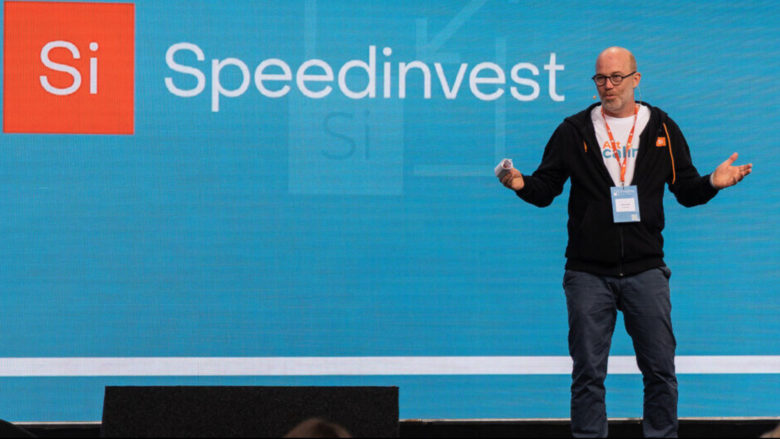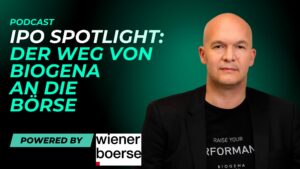What Startup Founders Need to Know to Survive the Economic Downturn

Oliver Holle is the CEO & Managing Partner of Speedinvest. In this guest post, originally published on the Speedinvest blog, he analyses the consequences of the recession for young companies and how to respond to the crisis. Speedinvest is also an investor in Trending Topics.
The world has changed dramatically and quickly. That’s not news. We’re witnessing the early stages of an ongoing, massive pullback of investors across all stages, specifically in growth. It’s going to be a tremendous stress test for a lot of business models. And yes, we do, unfortunately, expect to see a lot of casualties in and outside of our portfolio.
When I first shared my concerns about such a scenario at our annual portfolio event in 2019, it didn’t land very well with the crowd since we were all experiencing record-breaking levels of growth at the time. Fun was rightfully made at my expense as we then witnessed one of the biggest bull streaks in tech history. But now, three years later, winter, unfortunately, has come. And we’re going to be in this cold environment for a while.
That’s why we––just as all serious investors––immediately advised our startups to maintain a 24-month-plus runway and to use this time to work on their product and go to market. That was the easy part.
But what else can you do?
We’re hearing all sorts of questions from founders who are navigating through a major downturn for the first time. Are layoffs necessary? What should we be focusing on? Is growth still possible without taking a down round?
I’ve personally lived through the dot-com bubble burst as a tech founder and have seen the impact of a bad economy from both sides of the table throughout my 20-plus years in tech and venture capital. There are a few specific best practices that I believe founders––from every stage of the journey –– can be focusing on to find their footing and maintain it in the future.
Raising capital? Timing and momentum are everything, now more than ever
For Seed-stage startups, timing and momentum is increasingly important in this environment. We’re witnessing a massive bifurcation of the market.
The bad news is that, within a few months, the percentage of startups that can still attract significant capital from VCs has shrunk massively. Only the top 10 percent can still attract significant follow-on capital, raised at any valuation they want.
In 2021, investors––often driven by FOMO––gave the benefit of the doubt to new teams with new ideas. Now, most of them are retreating back to the “obvious bets” and backing founders who already have a lot of credibility, either due to past success, their network, or their CV. While these teams can still play the FOMO game and dictate terms and syndicates, the odds for everyone else have changed significantly for the worse.
But outside of the ‘10 percent club’ of super successful serial founders, it’s a different story. Most tourist investors are gone, which means there are fewer options for those startups that are good but not yet great.
So how can you break through the noise if you are not part of this privileged bunch?
The joint characteristics we have seen from founders who started from scratch and still succeeded in raising nice rounds speak a very clear language: show stellar growth acquired through low-cost user acquisition. The era of spending your way into growth is gone. That’s not a bad thing. At the end of the day, that’s what good startups should do anyways.
Related reading: Want to Be Recession-Proof? It Starts With Self-Awareness
Want to avoid a down round? Avoid the burn-rate trap.
If you are lucky enough to have raised money recently, please do not rest. Work needs to be done and your judgment calls will not be easy.
The most obvious and important message is to avoid the burn-rate trap, especially in this new environment. Everything the past two years was centered around growth and it’s important to appreciate how significantly that sentiment has changed. Crazy burn rates with “okay growth” of, let’s say, 50 to 100 percent is really not attractive anymore, especially at the earlier stages.
But that is only one side of the story. Measured, controlled growth makes sense, especially in this climate. At the same time, once you start fundraising from top international investors, you have to show tremendous momentum and growth. There’s no way around it. That’s the job of a VC, to invest in high-growth businesses.
So the trick is to keep your burn as low as possible while you are not raising, until the moment where you, hopefully, hit the inflection point and find product-market fit. That is, profitable growth. Ideally this is timed well enough in terms of cash runway so you can then expedite your growth by being brave and spending the money to create that momentum, timing it all to coincide with raising your next round. That’s easier said than done but great startups excel at exactly that kind of tactical game.
While you are still experimenting on growth, low burn needs to be your focus. But always keep in mind that profitability without growth is also a failed experiment.
You will make mistakes. It’s impossible to get these things right on the first go. I haven’t seen a single company that’s gone through this critical stage and then enter hyper-growth without breaking things. The sooner you come to terms with that fact, the better.
Want to survive? Rightsize your startup.
No matter where you are in your fundraising cycle, rightsizing your organization is what needs to be done now. Start this by looking at your cash flows––and I mean real cash flows, not some investor-friendly forecasting deck. If your runway is less than 18 months, then you have to raise more money––even if it means taking a down round. That’s a natural result of the economic climate we’re in.
But at the end of the day, your focus shouldn’t be on valuations. It should be on the business. One healthy exercise I recommend for founders is to look at the actual difference in dilution a potential down round will make. My bet is that you will be surprised how little it matters in relation to the existential risk of running out of money. So swallow your pride and do the deal. You will be in good company in the next few months.
Unfortunately, layoffs are also a necessity in this economic climate. I would say 9 out of 10 of our portfolio scaleups are well financed with plenty of cash on their balance sheet. Still, every single one of them are going through layoffs to some degree. I’d estimate the range is between 10 and 25 percent in cost cutting.
This needs to be done to reflect the change in expectations and criteria used to judge performance. It may not be easy, but it’s not the end of the world. You’ll grow, adapt, and calibrate. Hopefully, you’ll be back again in a position where you can continue to grow.
Dream of founding a startup? Do it now!
The good news for Seed-stage companies in need of initial capital now is that the current market outlook shouldn’t play as large of a role in your fundraising. We believe it’s a wonderful time to invest in early seed-stage startups, because it will take a couple of years in any case before you reach the point to raise significant capital. That’s good timing, given where we are right now.
How we invest hasn’t changed dramatically. We’re still looking for the best founding teams in new areas of innovation. As a proof point, we closed more than a dozen new deals since summer 2022. That’s not exactly sitting on the sidelines, I would argue.
Struggling to manage expectations? Join the club.
Managing expectations with investors, employees, and even among founders themselves is a major challenge right now for everyone, including us. The reason? We’ve all seen massive growth and doubled valuations over the past few years. But now there is a high likelihood that we are entering a period of plateauing where companies will have to grow into their valuations.
But that’s still an amazing thing.
Let’s take a step back. We as Speedinvest have six unicorns across our portfolio (Bitpanda, GoStudent, Open, TIER, Wayflyer, wefox) and none of us expected that to happen so quickly! Now we know that it will likely take another year or two for our portfolio startups to grow to that level and for other startups to join that club. So what? I think that’s perfectly okay. Expectations have (and must) change.
One thing that helps is to be fast. Don’t wait for yourself to adjust your perspective. Be proactive, transparent and honest with your investors. We aim to do the same with our LPs.
There is one fundamental truth I have learned over the last 20 years of ups and downs: You think you know something… until you don’t. And that is okay as long as you stay open about this fact. If you build relationships of true trust, people will understand and will follow you wherever you go. And nothing builds a stronger bond than going through tough times together.



























